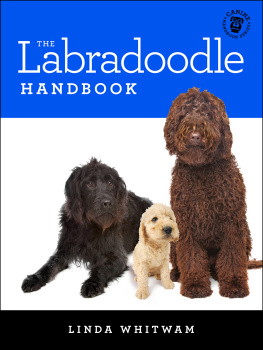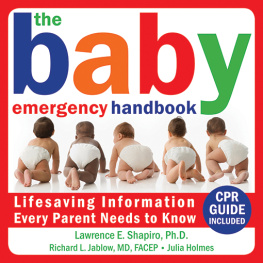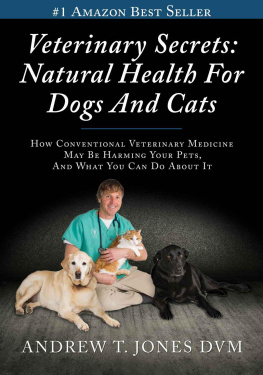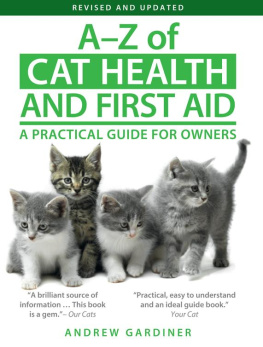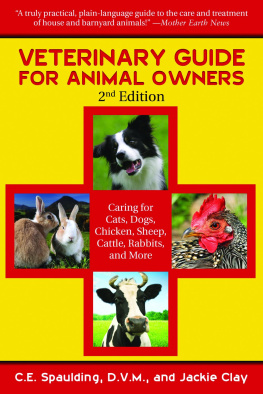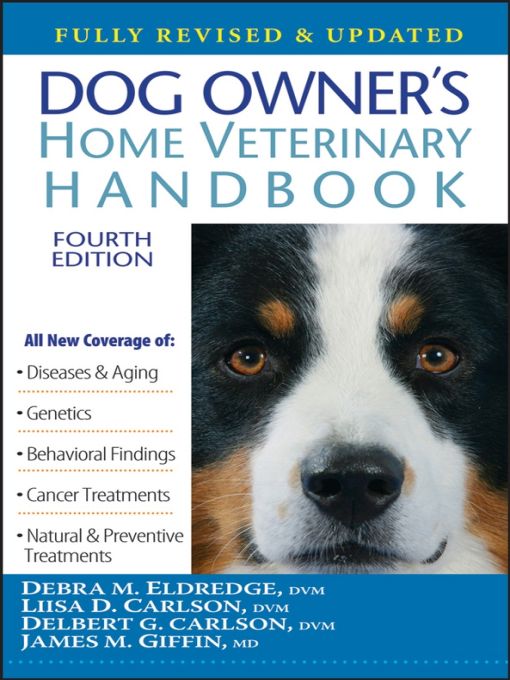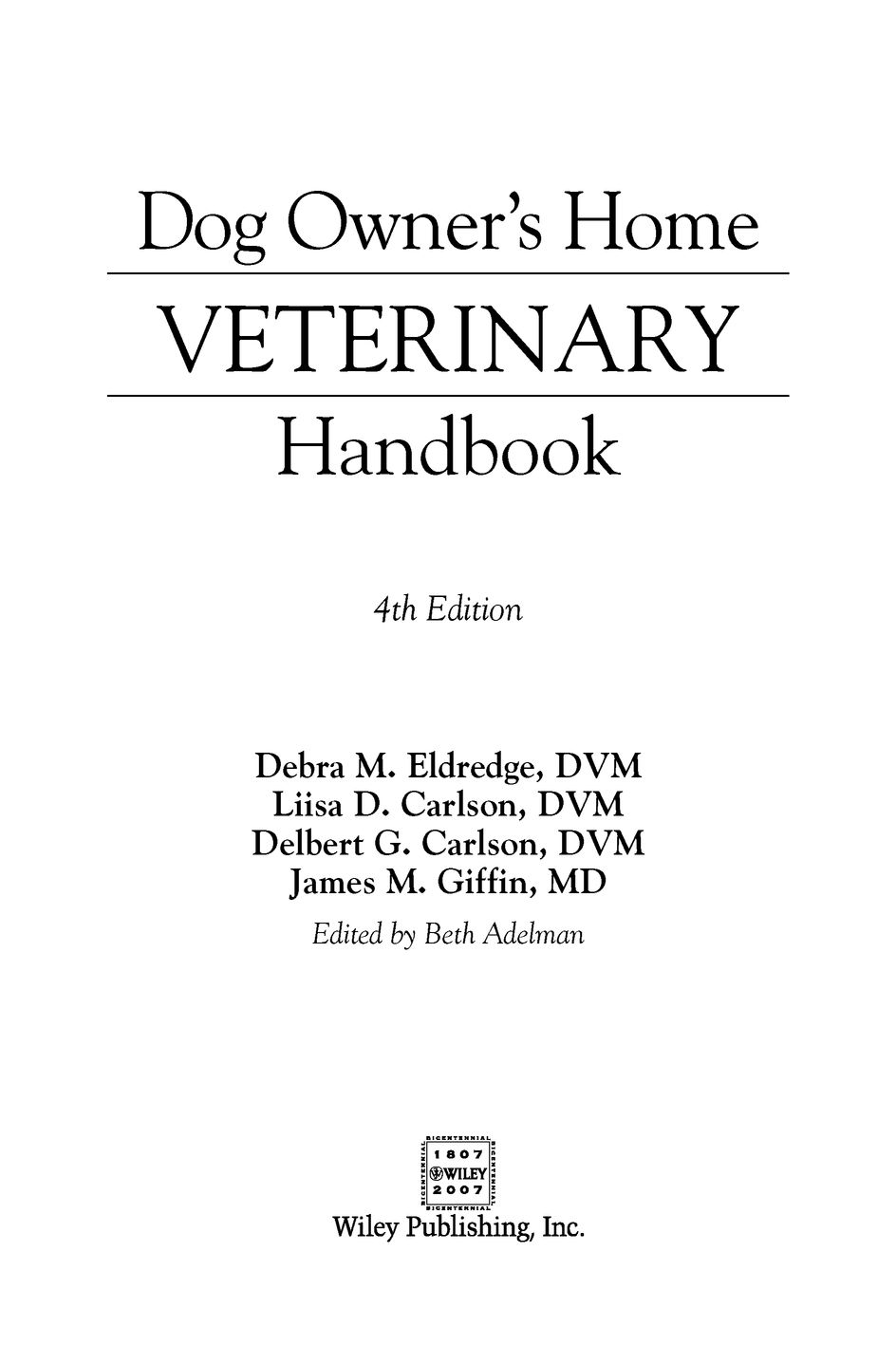Table of Contents
This book is not intended as a substitute for the medical advice of veterinarians. Readers should regularly consult a veterinarian in matters relating to their dogs health, and particularly with respect to any symptoms that may require medical attention.
In writing this book, we have described the signs and symptoms that will lead you to a preliminary idea of what is happening with your dog, so you can weigh the severity of the problem. Knowing when to call your veterinarian is very important. Delays can be dangerous.
At the same time, we have sought to provide guidance for the acute or emergency situations that you must handle on your own until you can get your dog to a veterinarian. Life-saving procedures such as artificial respiration and heart massage, and what to do in the event of poisonings, obstetrical problems, and other emergencies are explained step by step.
But a veterinary handbook is not a substitute for professional care. Advice from a book can never be as helpful or as safe as actual medical advice. No text can replace the interview and the hands-on examination that enables a veterinarian to make a speedy and accurate diagnosis.
However, the knowledge provided in this book will enable you to more effectively cooperate and better understand your interactions with your veterinarian. Youll be more alert to the signs of health problems and better able to describe them. Youll know more about basic care for your dog, and youll be prepared in an emergency.
FINDING IT QUICKLY
A special Index of Signs and Symptoms is on the inside of the front cover for fast referral. Consult this if your dog exhibits any unexplained behavior. It will help you locate the problem.
The detailed Contents outlines the organs and body systems that are the sites of disease. If you can locate the problem anatomically, look here first.
The General Index begins on page 607 and gives you a comprehensive guide to the books medical information. Where a page number is in bold, it indicates more detailed coverage of the subject.
Cross-references note pertinent supplementary information.
A Glossary on page 585 defines medical terms used preferentially to best explain the subject or condition. Many of these words are now being used commonly among veterinarians and their clients. Glossary terms will usually be found in italics in the text. (Italics may also be used for emphasis.)
ACKNOWLEDGMENTS
I would like to thank Roxanne Cerda for thinking of me for this project and my incredible agent, Jessica Faust of Book Ends, for making it work. I cant say enough good things about working with Beth Adelman as my editorit has been fun! Sandy Young, DVM, has done a great job in her technical review. And Marcella Durand has found us some images we thought might be impossible to find.
My thanks to my family, who have endured weird meals at weird times and dealt with the stress of occasional computer illnesses.
A special thank you to my three personal dogs, who oversaw this project. Ms Dani, my Belgian Tervuren bitch, offered counsel and company while making sure the school bus returned Kate and Tom every day. Hokey, my young male Belgian Tervuren, simply makes me smileevery day and often. Susan, the almost 15-year-old Pembroke Welsh Corgi who came to us as an 8-year-old, has been my shadow, my support, and an exemplification of true love.
Debra Eldredge, DVM
TRIBUTE TO A DOG
The one absolutely unselfish friend that man can have in this selfish world, the one that never deserts him, the one that never proves ungrateful or treacherous, is his dog. A mans dog stands by him in prosperity and in poverty, in health and in sickness. He will sleep on the cold ground, where the wintry winds blow and the snow drives fiercely, if only he may be near his masters side. He will kiss the hand that has no food to offer; he will lick the wounds and sores that come in encounter with the roughness of the world. He guards the sleep of his pauper master as if he were a prince. When all other friends desert, he remains. When riches take wings and reputation falls to pieces, he is as constant in his love as the sun in its journey through the heavens.
Senator George Vest, 1870
INTRODUCTION
The Dog Owners Home Veterinary Handbook has been a familiar title on my bookshelf for more than two decades. Its the book I turn to, time and again, for definitive answers on canine health.
Ive owned several editions of this book, always replacing my old one with the latest. But I have been surprised to learn that many dog breeders, and several of my journalist colleagues, have all three editions, going all the way back to 1980, because they just cant bear to part with them. Go to a canine sporting event and ask the exhibitors which health book they turn to most often. Chances are, it will be this one. Type in the title on any Internet search engine and you will see hundreds of web sites that recommend it.
This is an old book with a long legacy, but also a new one with some exciting additions. Youll find the latest information here on vaccine protocols; flea, tick, and heartworm preventives; raw diets; arthritis medications and supplements; treatments for cancer and kidney disease; and treatments for cognitive dysfunction in senior dogs. New drugs and surgical techniques are explained, and the latest information on how to prevent bloat is detailed. Canine influenza, one of the newest diseases of dogs, is covered. Youll also find the latest information on what we know about the canine senses, and possible organic causes of behavior problems such as aggression and compulsive behaviors.
When the third edition was published in 2000, therapies using supplements, nutraceuticals, and holistic modalities such as acupuncture were largely untested. Now, for illnesses where holistic treatments have proven to be beneficial, they are listed under the Treatments section.
Another new development is that scientists have described the canine genome. The result is a wealth of information on breed dispositions for certain genetic conditions, and on genetic testing for certain diseasesall of which is discussed in this edition.
According to a 2006 study by Veterinary Pet Insurance Co., the top ten canine medical conditions for which their policy holders filed claims were:
1. Skin allergies
2. Ear infections
3. Stomach upsets
4. Bladder infections
5. Benign tumors
6. Osteoarthritis
7. Sprains
8. Eye infections
9. Enteritis (diarrhea)
10. Hypothyroidism
You will also find all of those common canine health problems herecovered completely and comprehensively. And, whatever troubles your dog, you will find it described clearly and have a variety of treatment options to discuss with your veterinarian.
As an editor, its always an honor to work on a book that is already a classic in its field and will continue to be one. I also had the pleasure of working on the third edition with Dr. James Giffin. Because I was involved, I tend to look at that edition very critically. I have spent seven years wishing there were things we had done differently. At last, I have my chance. In this edition, the cross-references are easier to use, the index is expanded, theres an index of charts and tables, and overall, when you come home with your dog from the veterinarians office full of questions, its easier to find what you are looking for.


